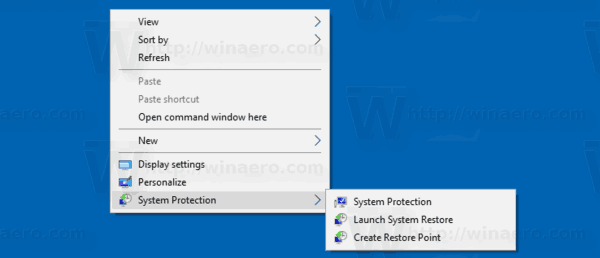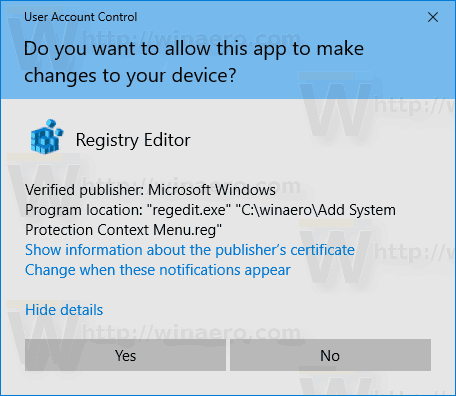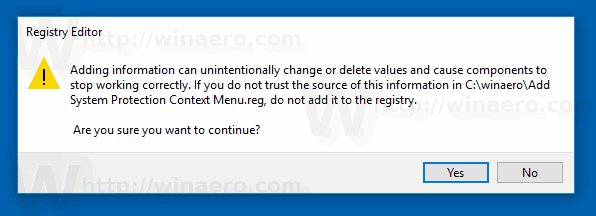If you use the System Restore function in Windows 10 to revert your operating system to the last known stable point when it was working correctly, you might be interested in accessing it faster. You add a special cascading context menu "System Protection" to the Desktop in order to access the options of this feature faster.

System Protection isn't a new feature of Windows 10. This technology was introduced in 2000 with Windows Millenium Edition. It allows you to roll back the installed operating system to the previous state. System Protection creates restore points which keep a complete state of Registry settings, drivers and various system files. The user can roll back the operating system to one of the restore points if Windows 10 becomes unstable or unbootable.
Advertisеment
In our previous articles, we saw how to add a "Create Restore Point" context menu command to the Desktop context menu. Today, we will see how to add a cascading menu which will allow accessing all the features of System Protection directly with one click.
Ensure that your user account has administrative privileges. Enable System Restore if it is disabled.
Before proceeding, you need to increase the system restore point frequency. This can be done with a simple Registry tweak which is described here:
Increase System Restore Point Frequency in Windows 10
To add System Protection Context Menu in Windows 10, do the following.
- Download the following Registry files: Download Registry Files.
- Extract them to any folder. For example, you can place them to your Desktop folder.
- Double-click the file "Add System Protection Context Menu.reg" to add the menu. Confirm the import operation and the UAC confirmation.


- Now, right-click the Desktop to see the menu.

You are done. The undo tweak is included. It is named "Remove System Protection Context Menu.reg".
Tweak contents
Here are the tweak's contents in case you are curious:
Windows Registry Editor Version 5.00 [HKEY_CLASSES_ROOT\DesktopBackground\Shell\SystemProtection] "MUIVerb"="System Protection" "Icon"="rstrui.exe" "Position"="Bottom" "SubCommands"="" [HKEY_CLASSES_ROOT\DesktopBackground\Shell\SystemProtection\shell\01SystemProtection] "MUIVerb"="System Protection" "Icon"="SystemPropertiesProtection.exe" [HKEY_CLASSES_ROOT\DesktopBackground\Shell\SystemProtection\shell\01SystemProtection\command] @="SystemPropertiesProtection.exe" [HKEY_CLASSES_ROOT\DesktopBackground\Shell\SystemProtection\shell\02OpenSystemRestore] "MUIVerb"="Launch System Restore" "Icon"="rstrui.exe" [HKEY_CLASSES_ROOT\DesktopBackground\Shell\SystemProtection\shell\02OpenSystemRestore\command] @="rstrui.exe" [HKEY_CLASSES_ROOT\DesktopBackground\Shell\SystemProtection\shell\03CreateRestorePoint] "MUIVerb"="Create Restore Point" "Icon"="rstrui.exe" [HKEY_CLASSES_ROOT\DesktopBackground\Shell\SystemProtection\shell\03CreateRestorePoint\command] @="PowerShell -windowstyle hidden -command \"Start-Process cmd -ArgumentList '/s,/c, PowerShell Checkpoint-Computer -Description \"Contextmenu\" -RestorePointType \"MODIFY_SETTINGS\"' -Verb runAs\""
That's it.
Articles of interest:
- How to run System Restore in Windows 10
- How to create a Restore point in Windows 10
- Delete a System Restore Point in Windows 10
- Create System Restore Point on Schedule in Windows 10
- Create System Restore Point at Startup in Windows 10
- Create A Restore Point in Windows 10 with PowerShell
Support us
Winaero greatly relies on your support. You can help the site keep bringing you interesting and useful content and software by using these options:
